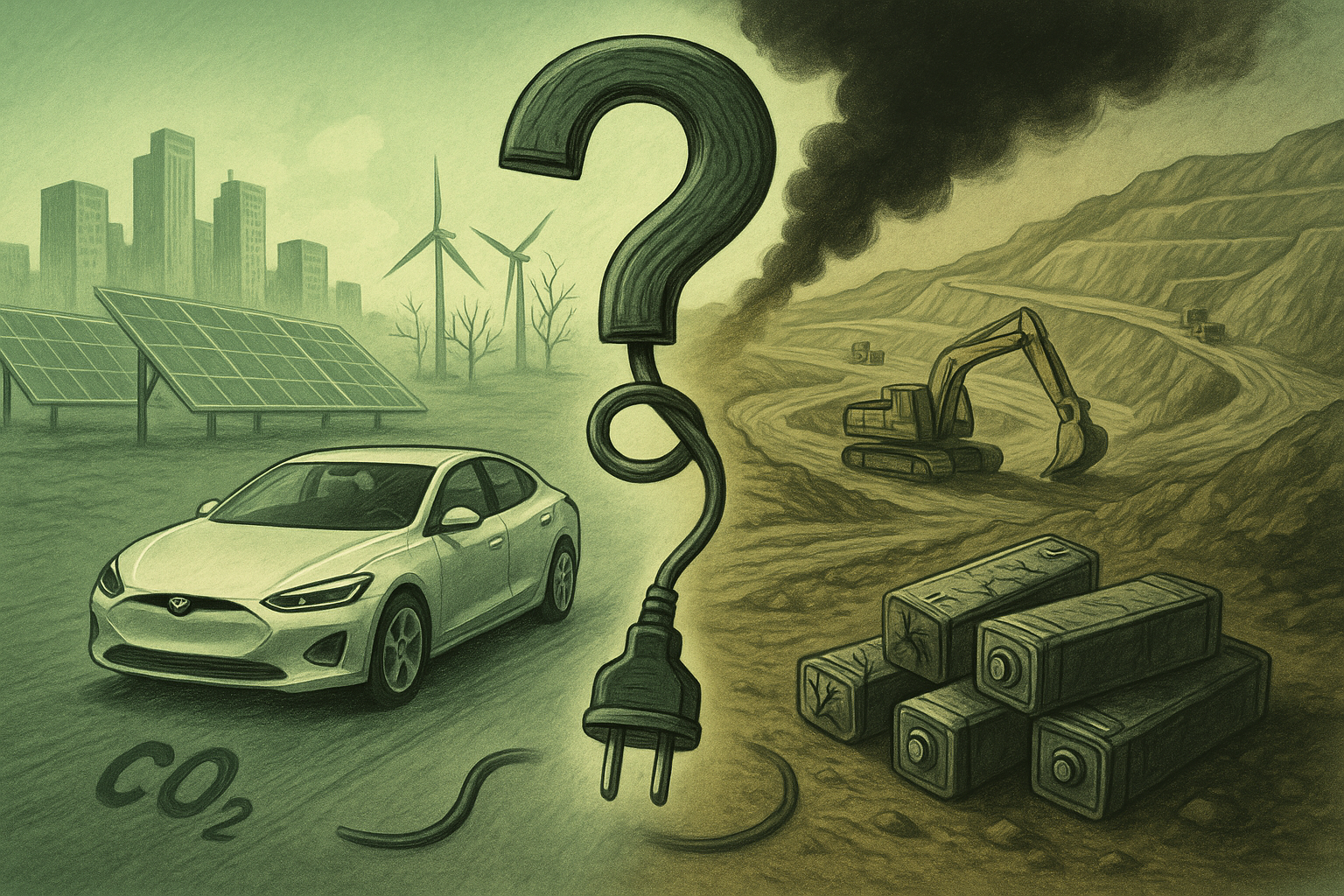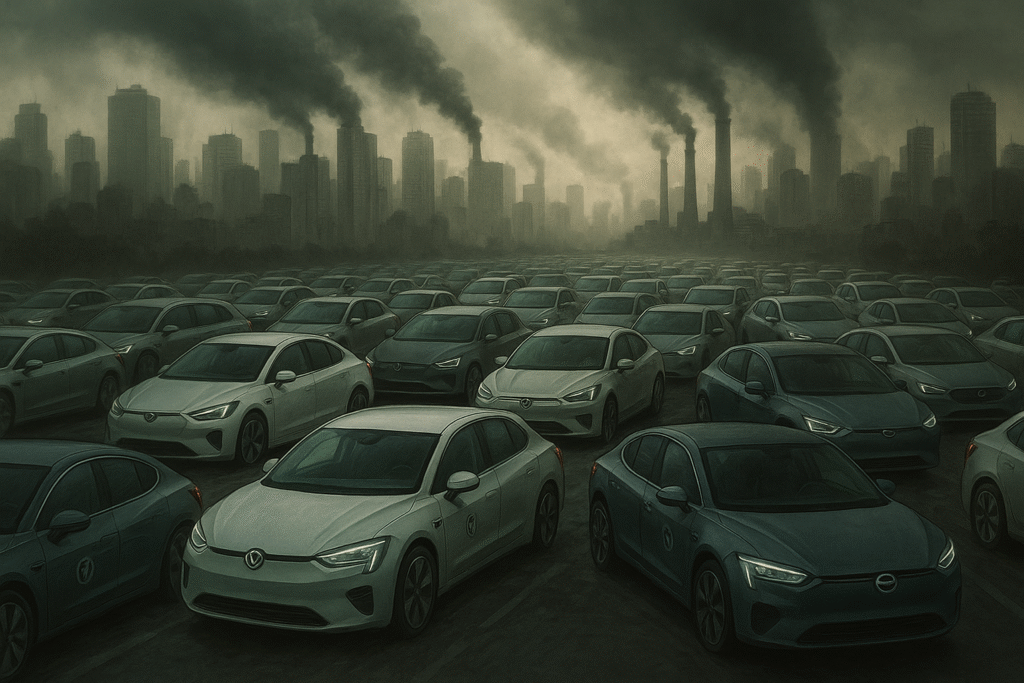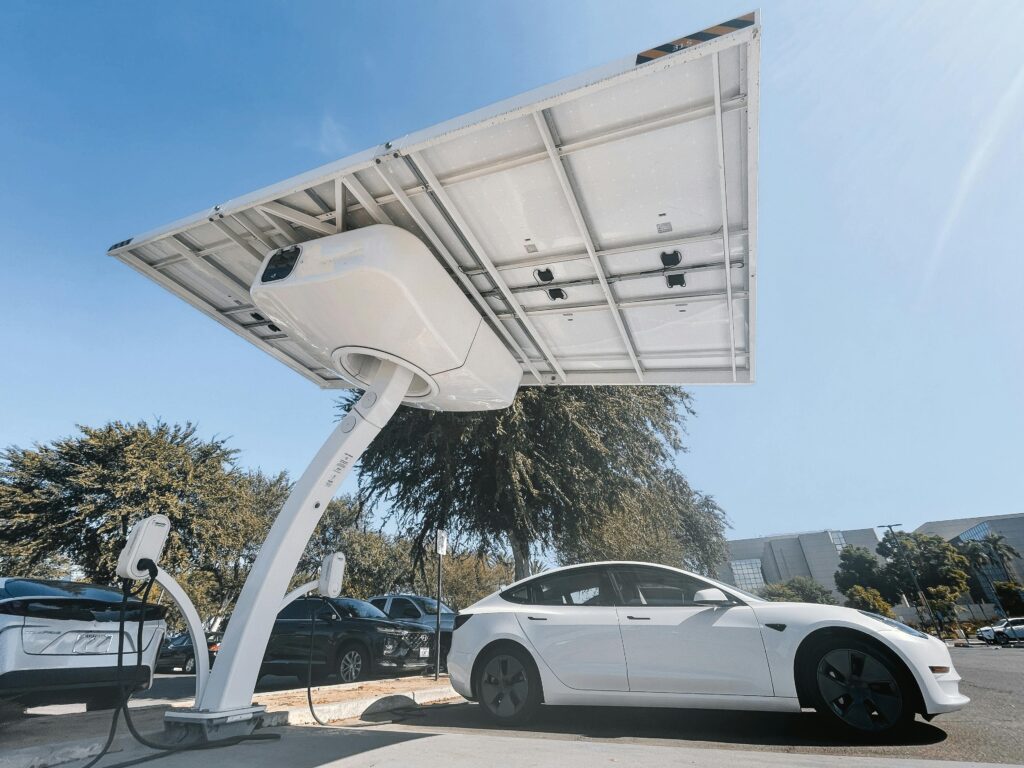The promise of “zero emissions”: Reality or mirage?
In recent years, electric cars have positioned themselves as the ultimate solution to the environmental crisis. We are presented with a clean, smoke-free, and sustainable future 🌱. But at the same time, analyze its complete life cycle, contradictions arise that question this narrative.
It's undeniable that, during their use, these cars reduce direct greenhouse gas emissions. By eliminating fossil fuels, they mitigate urban pollution and reduce our dependence on oil. However, this advantage should not be overshadowed by the fact that they are not harmful to humans. the hidden costs of its production and operation.

The environmental impact of manufacturing: A hidden price
Manufacturing an electric car requires materials such as lithium, cobalt, and nickel, which are essential for its batteries. Their extraction involves:
- Aggressive mining, associated with ecosystem degradation 🌲
- High water consumption, in regions where water is already scarce 💧
- Precarious working conditions, especially in developing countries 👷
According to MIT research, The manufacture of an electric vehicle generates more CO₂ emissions than that of a conventional one., primarily due to battery production. Before even driving, its ecological footprint is already marked 👣.
The paradox of “clean” electricity
Although these cars don't emit gases when they drive, their true sustainability depends on how the electricity that powers them is generated. ⚡ In countries where coal or gas dominate the energy mix, their use is still linked to polluting sources. It is not enough to change the engine if we continue to use the same energy as always..
Battery recycling: A pending challenge
Lithium batteries, with their limited lifespan, pose a future environmental dilemma 🔋:
- Lack of efficient infrastructure for recycling
- Accumulated toxic waste, without sustainable management on a global scale 🗑️
- Technical and economic uncertainty on its reuse
If viable solutions are not developed, millions of unusable batteries could become a new ecological crisis.

The hidden footprint: when maintenance equals pollution
While we celebrate the absence of direct emissions from electric cars, few are discussing an inconvenient truth: their environmental impact during everyday use bears striking parallels to conventional vehicles.
- Tire wear: They release microplastics identical to those of any car (up to 0.5 kg per 5,000 km according to ICCT studies).
- Braking systems: Although they reduce the use of pads thanks to regenerative braking, they still generate suspended particles.
- Hidden energy demand: Consumption of air conditioning, lubricants and refrigerants in auxiliary systems.
- Spare parts manufacturingThe components industry continues to rely on highly polluting processes.
Revealing data:
«40% of particulate pollution in European cities now comes from mechanical wear, not exhausts.» (European Environment Agency, 2023).
This phenomenon forces us to question: Are we really changing the paradigm or just shifting the problem?
The underlying problem: unsustainable overcrowding
Beyond the type of engine - electric or combustion -, The real environmental conflict arises from the excessive scale of our mobility model 🚦. If only 10% of today's vehicles were on the road today, emissions and resource extraction would be marginal problems. But we've normalized overcrowding: cities designed for cars, not people; industrialized production of millions of units annually; a culture that associates owning a car with progress, associated with the social theme of never have enough.
Electric vehicles, by promising a "clean solution," could exacerbate this paradigm: by becoming widespread without questioning excessive consumption, they will replicate the same unsustainable patterns—accelerated lithium extraction, mountains of discarded batteries, and growing energy demand—just under a different name. The real crisis is not in technology, but in our failure to recognize that no system is sustainable when unlimited growth collides with planetary boundaries. 🌍.

Is it worth the change if we maintain the same intensive usage habits?
Where should sustainable mobility go?
Electric cars are a step forward, but not a panacea.Its adoption must be accompanied by:
- Truly clean renewable energy (solar ☀️, wind, green hydrogen)
- Battery innovation (less polluting materials, greater durability)
- Rethinking urban transport (investment in public transport 🚌, bike paths and walkable cities)

While we celebrate their potential, we must avoid falling into the greenwashing (greenwashing) by believing that we are solving the environmental crisis when the underlying problem is still latent. Sustainability requires systemic changes, not just symbolic gestures.
What do you think? Are electric vehicles a genuine step toward decarbonization, or a distraction from deeper problems? Leave your analysis in the comments 💬.


